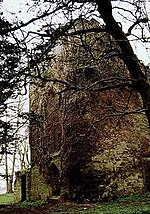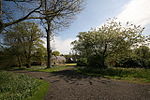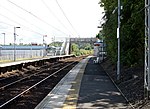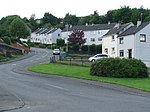St Peter's Seminary, Cardross

St. Peter's Seminary is a former Roman Catholic seminary near Cardross, Argyll and Bute, Scotland. Designed by the firm of Gillespie, Kidd & Coia, it has been described by the international architecture conservation organisation DOCOMOMO as a modern "building of world significance". It is one of only 42 post-war buildings in Scotland to be listed at Category A, the highest level of protection for a building of "special architectural or historic interest". It has been abandoned since 1987, and is currently in a ruinous state. In July 2020, the site was given to the Kilmahew Education Trust Ltd who plan to reinstate the educational elements of the Seminary Complex after conservation and restoration.
Excerpt from the Wikipedia article St Peter's Seminary, Cardross (License: CC BY-SA 3.0, Authors, Images).St Peter's Seminary, Cardross
Makeshift bridge,
Geographical coordinates (GPS) Address Nearby Places Show on map
Geographical coordinates (GPS)
| Latitude | Longitude |
|---|---|
| N 55.9703 ° | E -4.6406 ° |
Address
Makeshift bridge
Makeshift bridge
G82 5LB
Scotland, United Kingdom
Open on Google Maps








